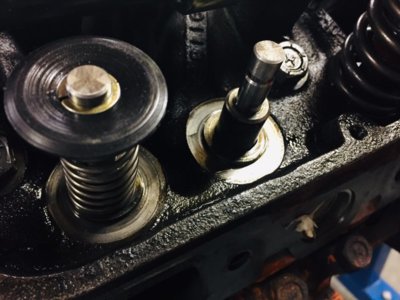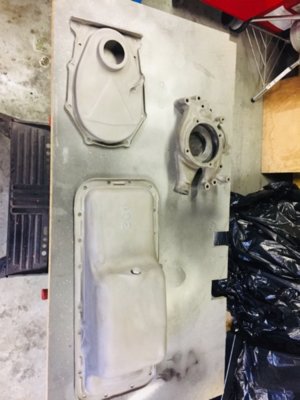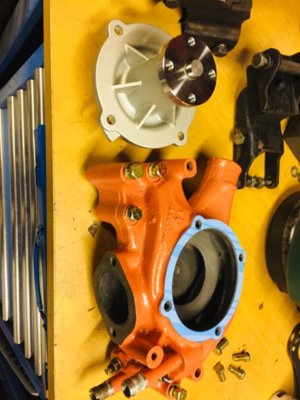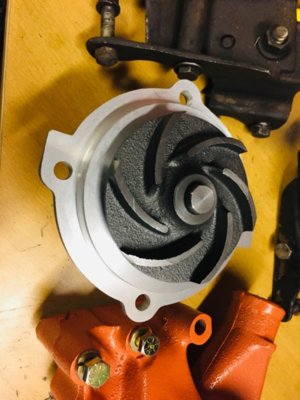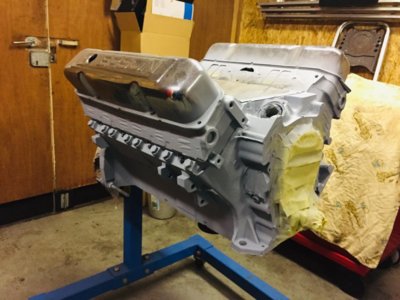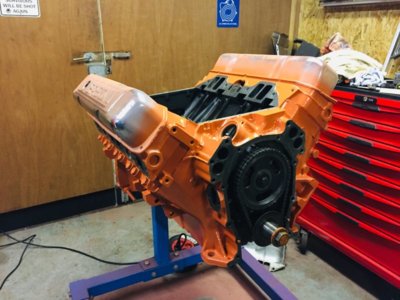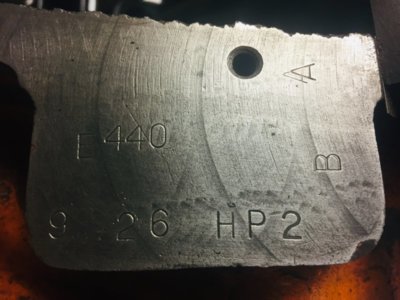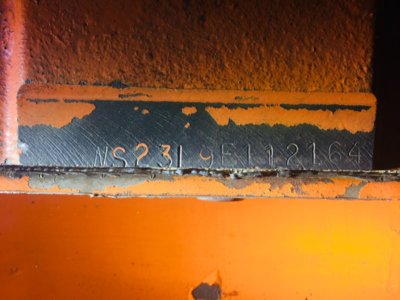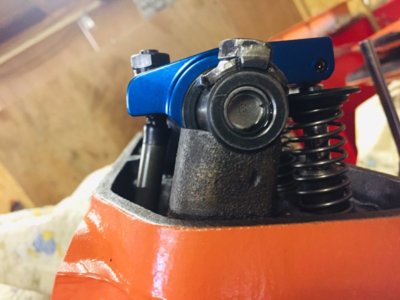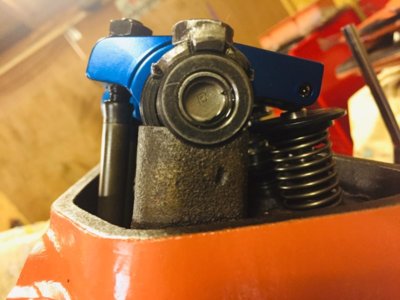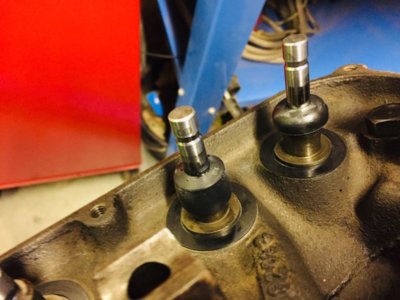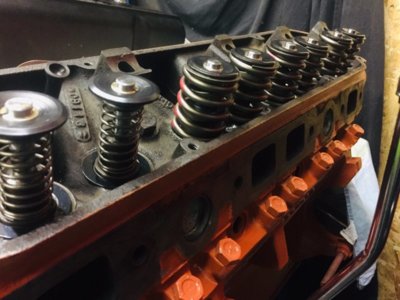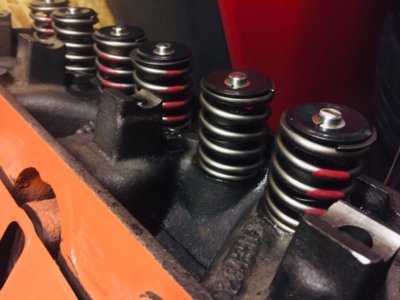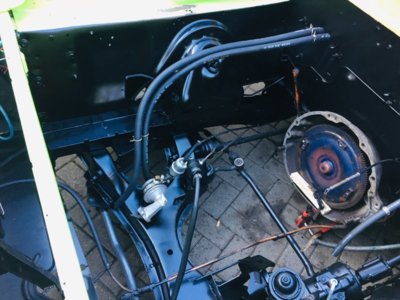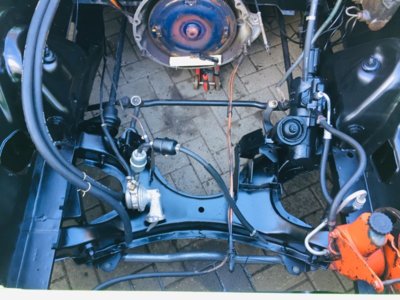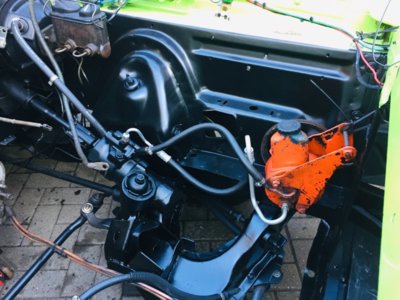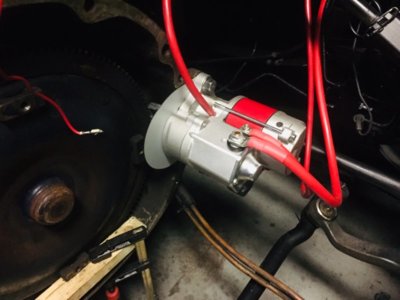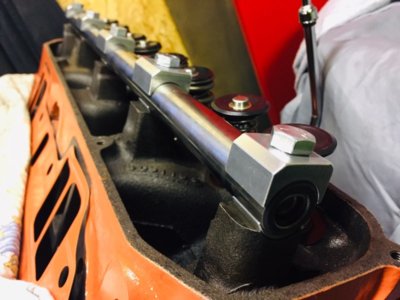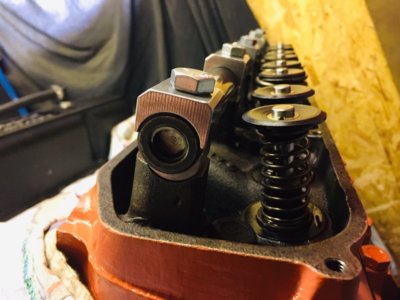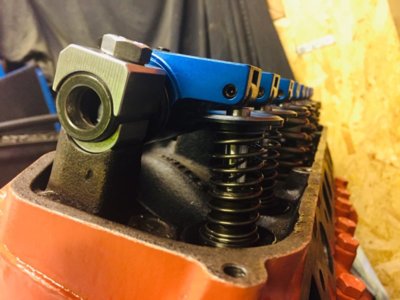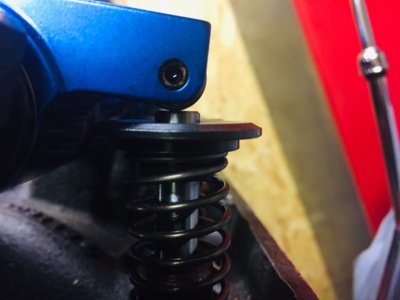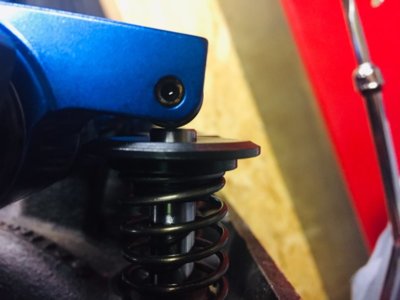B3 geometry correction kit is under construction, probably will take 2-3 week before i will get it.
Once that is installed still need to check for the correct length of push rods.
I noticed that the current preload on the hydraulic lifters had been set to the bare minimum.
The little piston is just slightly off the retainer ring, i can only mention 2 reasons for that; either has to do with the previous PV clearance (when it was advanced) or they did it to make it behave like a solid tappet for gaining some.
Going by the Hughes website their recommendations on their camshaft a preload of 0.080" - 0.095" is recommended.
Not sure what determines the preferable preload, the lifter or the camshaft?
What is a "safe" minimum preload to run?
At the moment i have around 0.100" PV clearance, so putting 0.095" of preload might be too close right?
Once the B3 kit is installed, and i can start playing with the push rod length i believe i will need to find the sweet spot of how much preload i will be able to run with what pushrod length right?
B3 recommends to go with the longest pushrod possible, as far as i can see it looks like i cannot shorten the adjuster screw on the rocker arm much more due to the oiling hole being quite low.
Currently they stick out around 0.300", maybe i can reduce it to 0.250" but i am not sure if that oiling hole is spraying oil or just dripping?
If it drips i need to make sure the pushrod cup sits below it when the valve is in the closed position.
Also ordered a set of TTI headers, 1-7/8" primary's and C5 finish. ceramic coated and thermal barrier inside.
Still waiting on my damn springs and oil pump....
Anyway, had some time spend on cleaning the engine bay and getting it ready for a paint job.
After all this is done, hopefully i have a nice looking engine bay with a 440 that spins like a kitten


